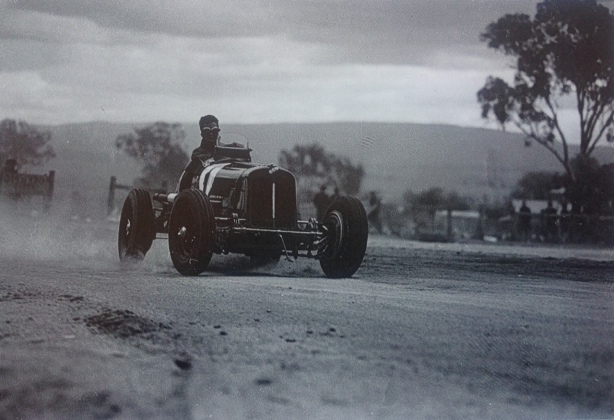
Peter Whitehead kicks the tail of ERA R10B out on the dirt surfaced Mount Panorama circuit, Bathurst AGP 1938…
It was said in those far away pre-synthetic fabric days that Australia ‘rode on the sheep’s back’ :120 million of the critters roamed Australia in 1938, we clothed the world, with 50% of the wool clip sold to the United Kingdom.
Peter Whitehead was a member of a wealthy Bradford family with extensive interests in the textile industry including Australia. The family company, W & J Whitehead were worsted wool spinners making yarn for products ranging from clothing to furniture. Whitehead lived on a farm near Reading, ‘Motorwork’ of Chalfront St Peter was the base for his racing activities.
He was despatched to the Colonies in 1938 to help expand the family empire, his ‘tour’ creating enormous press and public interest as, in addition to his ‘sheep shears’ he brought with him ERA R10B the ‘fastest car in Australia’. During his visit he ran the car at every opportunity in addition to his well known victory in the 1938 Australian Grand Prix at Bathurst including several attempts on the Australian Land Speed Record.

Whitehead, born in Yorkshire on 12 November 1914, started racing in a Riley progressing to an Alta and soon the ERA, acquired new from Raymond Mays and Humphrey Cooks’ concern in 1936.
Peter was a ‘wealthy amateur’ but also a fast world class driver, a lifelong enthusiast who won Le Mans in a C-Type Jaguar in 1951 in a long, varied career in sports cars and single seaters. His life was cut short by a 1958 Tour de France crash, he was a passenger in a Jaguar Mk1 driven by his half-brother Graham.
But back to the start…he commenced racing a Riley, quickly progressing, he finished third in the Limerick GP, a Formula Libre race, which was the first major result for Geoffrey Taylor’s Alta firm. In 1936 he finished third in the Donington Grand Prix, sharing his ERA, with his driving partner in the car throughout, Peter Walker.
During the war he joined the RAF as a pilot. Once the war was over he was back racing, taking his ERA to second place in the British Empire Trophy on the Isle of Man in the summer of 1947. Later that year he raced at Lausanne as well. In 1948 he survived a plane crash at London’s Croydon Aerodrome being seriously injured. He had been preparing to fly to Milan to arrange the purchase of a Ferrari 125.
In 1949, after convincing Enzo Ferrari to sell him the car, he became the first Ferrari F1 privateer. With the green painted 125, he won the Czech GP, becoming the first Briton to win a major race abroad since Seaman. He almost won the French GP as well but gearbox problems pushed him back to third.

In 1950 he won the Jersey Road Race and the Ulster Trophy at Dundrod and achieved a career highlight at Le Mans in 1951 sharing the winning Jaguar C-Type with Peter Walker.
He continued to race and win in Formula 2 events across Europe in 1951 and 1952 with an Alta, a Cooper-Alta and his Ferrari. In 1953 he shared victory with Stirling Moss in the Reims 12 Hour in a C-Type Jaguar winning the race again the following year in a D-Type, sharing with Ken Wharton, it was the ‘D’s first win.
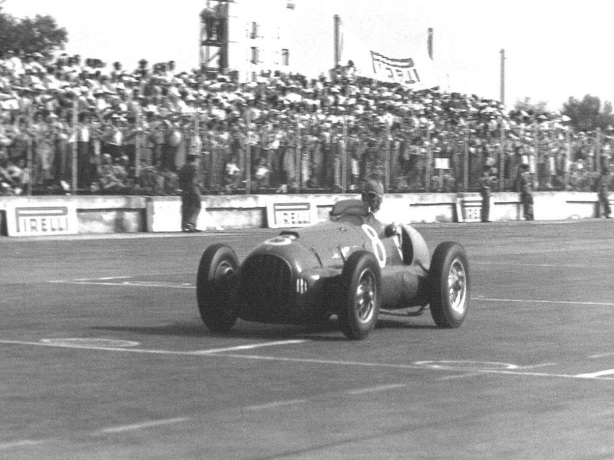
In 1953 he won the French 12 Hours of Hyeres and added Ferrari single-seater victories in the Lady Wigram Trophy in New Zealand and in the Rand GP in South Africa. He returned to Australia in 1956 contesting the ‘Olympic Grand Prix’ at Albert Park finishing third in his Ferrari Super Squalo in the race won by Stirling Moss’ works Maserati 250F.
At Le Mans in 1958 he shared the second-placed Aston Martin DBR1 with his half-brother Graham then, a couple of months later, Peter lost his life during the Tour de France. Their Jaguar, with Graham at the wheel, crashed over a bridge parapet into a ravine, injuring Graham and killing Peter.



ERA R10B…
ERA was founded by Humphrey Cook, Raymond Mays and Peter Berthon on November 6 1933 and established in Bourne, Lincolnshire next to Eastgate House, Mays family home.
Their ambition was to build a team of single-seaters capable of upholding British prestige in European racing. Given the cost of Grand Prix racing, they focussed on the smaller voiturette, 1500cc supercharged class, the Formula 2 of the day.
Humphrey Cook financed the operation. Peter Berthon was responsible for the overall design of the cars, while Raymond Mays became its principal driver, he had most recently raced the White Riley, the success of which inspired Cook to back its creators in founding ERA.
It’s said the first design drawing by Reid Railtons’ assistant Ralph Beauchamp was dated 23 October, before ERA was formally incorporated. The chassis, a channel section frame, was designed by Railton who had also successfully designed the Bluebird Land Speed Record cars for Malcolm Campbell. The frame was built by Thomson & Taylor at Brooklands.
The wheelbase was 96 inches, the front and rear track 52.5 and 48 inches respectively. Panel-beating brothers George and Jack Gray hand crafted the bodywork, to a design credited to a Mr Piercy who had previously designed ‘Bluebird’s body.

Suspension front and rear (A & B types, the works team raced the A-Type in 1934/5, the B-Type had a slightly revised chassis and more reliable engine) comprised H-Section live axles forged by Hadfields, sprung by semi-elliptic leaf springs, dampers were Hartford friction type.
The engine was based on the well proven Riley 6-cylinder unit, modified in a number of significant ways. A stronger forged crankshaft with a large centre Hyatt roller bearing, three main bearings in all, was made and an entirely new aluminium cylinder head designed. The engine used a bespoke supercharger designed by Murray Jamieson which was fed by a single SU carburettor. One plug per cylinder was ‘sparked’ by a Lucas magneto. The engine was designed in three capacities: a base 1488cc, 1088cc and 1980cc. It ran on methanol, in its 1500cc form it produced circa 220-240 bhp with in excess of 275 bhp in 2000cc form.
The cars were fitted with Wilson four-speed pre-selector gearboxes, Girling mechanical brakes and 16X5.25 inch tyres, total dry weight was 2016 pounds.
The unveiling of ERA, R1A took place at Brooklands on 22 May 1934. After initial handling problems, which required a number of modifications, ERA had a winning formula. By the end of the year ERAs had scored notable victories against many more established marques.
R10B was built to Peter’s order in 1936 with a capacity of 1.5-litres. The price quoted was £1500. R10B remained 1.5-litres in capacity until Whitehead fitted a 2-litre engine and two-stage blower in 1949, but for the period we are covering was a standard-spec 1.5-litre B-Type ERA.

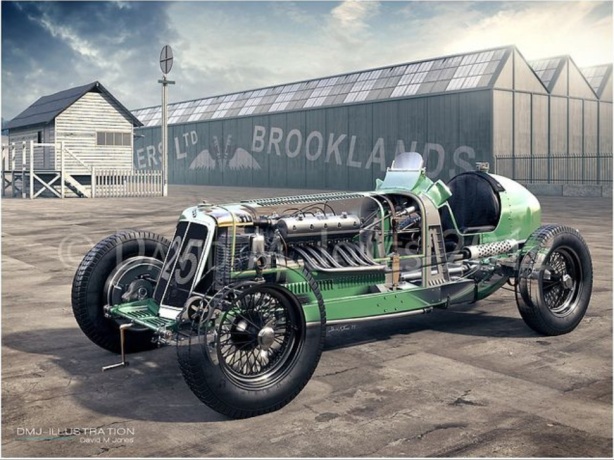

England to Australia : Maroubra Speedway: Sydney, NSW April 1938…
It’s not recorded from whence the Whitehead crew set sail in England but the first event for the car in the Southern Hemisphere was the Australian Grand Prix held at the new Mount Panorama circuit on the Easter Sunday weekend, 18 April 1938
That Whitehead tested his ERA or ‘ran in his engine’ on what remained of the Maroubra Speedway’s concrete bowl whilst in Australia does not seem to be in doubt. Perhaps it was prior to travelling to Mount Panorama. This is plausible if the car was shipped from the UK to Sydney, docking at King Street’s ‘Hungry Mile’, infamous as the place where thousands of unemployed labourers sought a days work in the long years of The Depression or Jones Bay Wharf in Pyrmont.
To test the car with the resources of the Sydney ‘fettlers’ closeby makes ‘racers sense’ after the ERA’s long voyage. The other possible time of the Maroubra test was perhaps after the failure of a piston and the engines rebuild or replacement after the car’s failed Australian Land Speed attempt at Gerringong Beach, NSW on November 10. That seems to have been the cars last event in Australia, R10B needed to be race ready for the two events in South Africa Whitehead contested in January 1939 on the way back to the UK.
Maroubra is a Sydney Southern Beaches suburb adjoining internationally known Bondi. Speedwayandroadracehistory describe the history of ‘Olympia (Maroubra) Speedway’ as follows…’The paved bowl Maroubra Speedway opened on the 5th of December 1925. It had the reputation as Australia’s most notorious ‘Killer Track’
‘Situated South of Sydney in a natural hollow in the Maroubra sandhills, it was an ideal area for the track as the natural landscape lent itself to a huge saving on the cost of earthworks and the large population of Sydney was just down the road. Once the track was completed claims of up to 70,000 spectators were made. The track was that steep through the turns that it was impossible to walk up the track face.’
‘Snakes were a major problem as they would come out during the heat of the day to soak up the sun’s rays on the race track, a bit of a worry with no protection from another cars wheels flicking up a Dugite snake into the open cockpit’. Hmm, yep!
‘Five competitors would lose their lives in just two years during the 1920s. In 1927 the great Phil Garlick driving his super-charged Alvis, blew a tyre and rode over the top edge of the race track, hitting a light pole and died instantly.’
Plagued with problems the short 5/6th of a mile venue closed in 1927, long gone were those two years of large crowds looking on in amazement at the motorcycle racers reaching speeds of up to 100mph side by side on the big banked oval.
Less sensationally, Graham Howard in an article for Motor Racing Australia remarked on the bravery of the promoters in building a facility unlike any in Australia before, the short concrete track having curves of 16 degrees and dizzying 48 degrees elevation built by contractors with no expereince in anything like it.
Crowds never matched any more than one third of the 60000-90000 estimated on the opening day, many spectators avoided paying for the entertainment on offer by making use of the local surrounding sandhills which attracted the investors in the first place. The original entrepreneurs went bust in 1926, subsequent management tried night racing for both cars and ‘bikes. The danger of the place caused competitor entries to decline, all the racer fatalities occurred on the same section of track after the north-east curve.
Maroubra’s last race meeting was held in November 1934, the original crown lease was assumed by the Housing Commission, by 1951 construction of dwellings had commenced and by 1961 the area was occupied by 4000 people. Sydneysiders can check out the area bounded by Anzac Pde, Malabar Rd and Fitzgerald Avenue as the site of actions of derring-do in the 1920’s…
I’ve not uncovered any photographs of Whitehead at Maroubra but have chosen a couple of period photos’ to provide the flavour of the place.



Whitehead timed his stay in Australia around The Australian Grand Prix, held that year at Bathurst, Easter in April…
The daunting circuit was newly built and had a gravel surface. Whilst Whitehead’s ERA was the most advanced new car in the race, the AGP was held to Formula Libre and handicapped until 1953 due to the paucity of equivalently competitive cars, the sport very much an amateur activity at the time.
John Medley wrote the 1938 chapter of Graham Howard’s magnificent ‘History of The Australian Grand Prix’, Medley records…’The new circuit over Bald Hills near Bathurst was the sene of the 150 Mile AGP…The first ‘real’ AGP outside Victoria, it drew the largest field so far, 39 entries, it continued the trend towards larger engines, it had a multi-state entry (and two from the UK), it produced the first overseas winner of an AGP, and was run on the only one of the great traditional old circuits to survive to the present day’.

The ERA dominated the entry list, the car had been raced by both Whitehead and Peter Walker, having finished third in the 1936 Donington GP, the 1936 Nuffield Trophy, the 1937 Junior Car Club 200 Mile event at Donington and the 1937 Empire Trophy also at the Leicestershire circuit.
Medley reports the quickest Australian cars entered were the McIntyre owned, Frank Kleinig driven Kleinig Special an eight cylinder Terraplane powered car based on an MG L-Type Magna chassis; the development of this amazing car over 15 years is a story in itself. Tom Peters was entered in the Ford V8 powered Bugatti T37A which won both the 1930 and 1932 AGPs at Phillip Island in Bill Thompsons’ hands. Colin Dunne entered an ex-Bira MG K3, Jim Fagan another K3, ex-Birkin/Don/Hall, and Lyster Jackson the final K3 ex-Hall.
Fellow Englishman Alan Sinclair joined Whitehead racing an ex-Winterbottom Alta 21S 1100…’The Alta an infrequent starter in Australia, being a temperamental beast-apparently like its owner who had a lively time whilst in Australia. The Alta non-started at Bathurst too, but that may have had something to do with Sinclair spending the previous Friday night in the cells on sundry drunk and disorderly charges’ Howard reports.
Other entries included Tim Joshua’s Gough engined Frazer Nash, the Mrs Jones owned Alfa Romeo 1750SS to be driven by future AGP winner John Barraclough, George Martin’s BMW 328,(this 328 won the 1948 AGP in Frank Pratt’s hands) Barney Dentry in the Riley which won the 1932 Brooklands 500 Mile Race, Dentry having competed in all but one AGP.

The importance of Australian Specials at the time is highlighted by the entry of George Bonser’s and Harry Beith’s Terraplane Spl’s. Wangaratta’s Jack Phillips’ entered his Ford V8 Spl, so too were Queenslander Charlie Whatmore and Arncliffe, Sydney garage proprietor Fred Foss similarly mounted.
Shanghai born Bob Lea Wright was remakable chracter, a WW1 fighter pilot, national swimming champion and a good boxer who rose to the rank of Major during WW2 in the Service Corps. He was in a Terraplane Spl as was Bowral, NSW, Hudson/Terraplane dealer Les Burrows.
Alf Barrett, about whom I wrote not so long ago entered his Morris Bullnose Spl for Colin Anderson and the ex-Jack Day 1927 supercharged Lombard AL3 for himself. New MG ‘T’s were entered for John Crouch, Alan Crago and R Kerr stripped of ‘guards and lights as was the 1934 Riley Imp of George Thame.
On the face of it the ERA was easily the fastest car in the race but the AGP was a handicap, anything can and did happen over the years the event was held to the F Libre/Handical format.
John Medley reported that, ‘Despite the bitterly cold morning over 30000 spectators thronged all parts of the circuit…After a grand parade, the limit marker, Ron Uffindell’s Austin 7 was away on its long journey. Over the next half hour the rest of the field left the line, scratch marker Whitehead leaving a blanket over the ERA radiator until the last moment’.
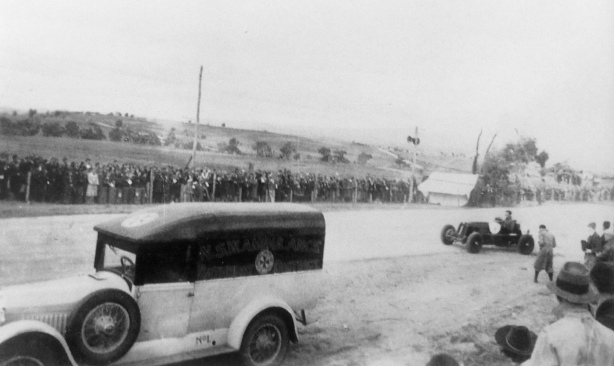
‘Already by the time of Whitehead’s raucous departure there had been pitstops and retirements’: Thames Riley Imp broke its crank, Barretts Lombard was out with either magneto trouble or run bearings but Alf was impressed by the ERA, the purchase of an Alfa Monza via Thomson and Taylor shortly thereafter the result of a desire to get a competitive, reliable car. Les Murphy lost time with a long stop and Frank Kleinig retired after throwing a fan-belt.
‘So through the dust and ruts and the flying stones Uffindell lead with Anderson and Pike in pursuit…the battling MG T’s were next from Crouch, Keir…further back Burrow’s Terraplane, the McKellar V8 but already Whitehead was looking the likely winner, lapping faster than expected’.

On lap 20 Peter pitted for oil, fuel and water, by then the Norman Aubin Ford V8 Spl, Williamson Chrysler, Joshua Frazer Nash and Weir MG had retired.
‘According to the Bathurst Advocate…this intrepid Englishman apparently does not know the meaning of fear. Once or twice his car slid badly and began to waltz about on the road but he just smiled unconcernedly and set it racing on a perfect course again with the utmost simplicity’.

At the 100 Mile mark, the Crago MG, driven now by John Sherwood, led Uffindell by a minute, Crouch and Burrows side by side across the line in third and fourth. ‘But the writing was on the wall-either Whitehead or Burrows would win’.
‘The race continued with the corners badly rutted and increasingly dangerous. The Foss Ford V8 Spl, Pike and Beasley Singers and Fagan’s noisy megaphoned MG K3 also fell out and the Burton Alvis in a race punctured by incidents spun again at the Esses’.


‘On lap 30 Burrows lead by 8s from Sherwood with Whitehead in sixth place and 3m 40s behind…rapid calculations suggested that Burrows might beat the black ERA home-but it was not to be; a disappointed Burrows slowed, the Terraplane sounding woolly, and Whitehead, despite a windscreen broken by a flying stone 5 laps from the end, passed him during lap 35 to forge away. Burrows maintained his distance ahead of Sherwood in the Crago MG’.
Whitehead received the chequered flag from Whatmore and Sherwood. Many pitcrews disagreed with the official results, after protests the placings were: Whitehead in R10B, Les Burrows in the Terraplane Spl, Crago in MG T, T Peters in the MacKellar Spl s/c, John Crouch MG T and Jack Phillips, Ford V8 Spl.

Medley…’Whitehead received a tremendous ovation at the finish and afterwards was surrounded by a huge crowd. Dusty, dirty and deaf in a dark blue shirt, spotted tie and grey slacks, mug of beer in hand, he praised the circuit, fellow competitors, and the race itself: ‘I think it is a really fine track. It has the fast corners and the slow corners and a long straight that enables cars to make up lost time…when tar paving is carried out it will be hard to better it…some nasty bumps appeared down the Mount during the latter part of the race’. He said he had not been troubled by spectators walking on the track!
In the best traditions of motor racing Whitehead and Sinclair led the celebrations. Jim Leech in the Light Car Club of Australia History ‘…at the prize presentation His Worship The Mayor had just finished his address to the multitudes and was on the point of handing the winner’s trophy to Whitehead when he was squarely hit on the head by a large cauliflower. This being followed by a shower of similar vegetables resulting is His Worship, his two daughters and other Councillors retiring in disordered haste’.
John Medley, ‘The sporting newspaper The Referee had earlier predicted that ‘Englishmen Whitehead and Sinclair will add tone to the event…’


Land Speed Record Attempt : Canberra, ACT June…
The Canberra Speed Trials were annual events conducted during the 1920s and 1930s featuring standing start and flying start time trials along a rural road which is now Northbourne Avenue, literally Canberra’s main street. I can find little reference to these events but the photos in Ted Hoods’ Collection in the State Library of NSW make up for the paucity of information otherwise.
Racer Arthur Rizzo, in an article about his Rizzo Riley Spl said of Whitehead’s attempt, ‘1938 saw us in Canberra to watch the attempts on the Australian records. Peter Whitehead’s ERA sounded terrific and was hand timed to around 150mph.’ (the timing gear refused to record his time)
‘Later the same year we saw the ERA at Bathurst on a circuit that was all dirt. We were at the top of Conrod looking up at The Esses and I remember the ERA coming down into Forrests Elbow in the deep wheel tracks, the fixed crank handle digging into the mound between the tyre tracks and making a noise like a machine gun’.




After the AGP the ERA journeyed from Central New South Wales to the outskirts of Melbourne to contest the Australian Hillclimb Championship at Rob Roy in the Christmas Hills on 13 June…
Peter needed to run in some engine parts so did part of the journey in R10B from Canberra on the Hume Highway, the main road between Melbourne and Sydney! It’s hard to imagine Lewis Hamilton doing something similar in his ‘Benz whilst he was in Oz for the 2015 AGP. Mind you, according to one report the ERA was locked up for a bit due to this escapade. Such were those wonderful far away days.
Rob Roy is still in use, it’s a short climb and was then, as so many of our venues were, unsealed until the following year. The Melbourne Argus reported that 3500 people attended the pretty little hamlet and watched Whitehead clip 3.94 seconds off the previous record. His best time was 31.48 seconds, winning both the Australian and Victorian Hillclimb Championships from Jack Phillips’ Ford V8 Spl and Arthur Terdich’s Bugatti T37A.




Land Speed Record Attempt : 90 Mile Beach, Woodside, Victoria Sunday 4 September…
The Perth Sunday Times expected the Australian record of 92mph to be surpassed at the 90 Mile Beach – as the name suggests – a long expanse of coast at Woodside near Yarram 210 kilometres from Melbourne. The attempt was made under the auspices and control of the Australian Automobile Association and a top speed of over 120 mph was expected over the four miles of pristine beach chosen for the attempts of Whitehead and others.
The Adelaide Mail in its pre-event report described Whitehead ‘as a pleasant young Yorkshireman, a shock headed wool buyer and amateur racing motorist’.
Whitehead was quoted as saying ‘ The car can do it if the conditions are good…You just sit there and tread on the gas, and hold tight to the wheel. On a good test run particularly, it is not the driver that counts but the engine. The ERA is good class here, but in England she is pretty slow. At the beach on Sunday I am not going to be a Segrave or a Campbell!! So do not be disappointed’.

That 6000 people ‘conveyed by nearly 2000 motor vehicles ‘attended the event at the time is remarkable given the distance from Melbourne, the small local population and the lack of public transport to access the then relatively remote location.
The Melbourne Argus reported that the attempts were stymied by a strong south easterly wind which prevented the usual fall of the tide. After Whitehead achieved 118.8 mph in the ERA waves washed over the track preventing any further serious attempts. As Peter’s speed was in one direction, the rules requiring a two way average, a new record was not recognised, the existing record set in Canberra some years before, by Bill Thompson’s Bugatti at 112.5mph remained. The report noted that Thompson was an interested onlooker.

I love the terminology of the day ‘…the crowd began to throng the sand hummocks along the picturesque track many hours before the events were timed to begin. Trials were impossible owing to the tide. When Whitehead warmed his engine up for the first run at 2pm officials expressed keen disappointment at the failure of the tide to fall to within 20 yards of the usual mark’
‘With only a few yards of wet sand between the flags and the waves on the four mile course, Whitehead pluckily started up so as not to disappoint the crowd. He was obstructed by water in his first run however, and although he averaged 118.8 mph in his next run, his car plunged through the lip of a wave, tearing away the apparatus for cooling the brakes, ripping off the oil filler cap, and partially flooding the crankcase with salt water. He maintained control but it was evident that he had no chance of putting the record up to 135mph which was his hope’.

Officials decided to allow other drivers some runs whilst Whitehead attempted repairs but the day was abandoned ‘with waves lapping the tent containing the electric timing apparatus and washing completely over the finishing point…there was a rush to get cars off the beach before the tide rose further’.
In an indictment of the morals of the men of the day The Argus on the same page breathlessly reported that ’55 men were arrested in Flinders Lane, Melbourne having been in a ‘common gaming house’, punting on the horses not allowed off course at the time!



Aspendale Speedway : Melbourne, Victoria 1 October…
That Whitehead would run the car everywhere was shown again when he contested a ‘feature race’ at Aspendale Speedway in October. The venue was conceived as a horse racing track by James Crooke in 1891 but incorporated a track for ‘new fangled automobiles’ from 1906. In fact one of the very first races in Australia was contested at the venue that year.
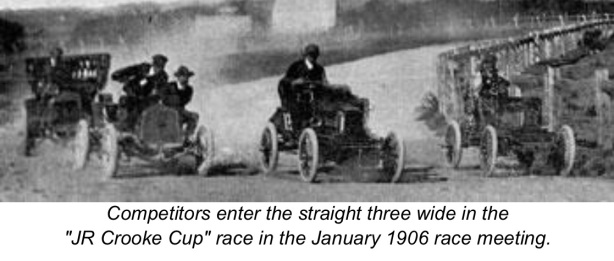
Aspendale is a suburb 25 Km from Albert Park, also on Port Phillip Bay, which you can see from the AGP telecasts. When built, the facility was on Melbourne’s fringe but growing urban encroachment meant the track was subsumed for housing, the venue was used for motor racing into the 1940s.
The Argus reported that ‘The success of Peter Whitehead, the English racing car driver was a feature of the motor races conducted at the Aspendale Speedway on Saturday by the Light Car Club of Australia. Whitehead displayed the amazing acceleration and power of the car on the straights, especially the back stretch where he attained about 100 miles an hour. In the invitation race of 10 laps he completed 1 lap in 43.45 seconds at 82.79 mph. This established a lap record for the track.’
Whitehead won the feature from R Curlewis, MG and P Chain, Frazer Nash.


Parramatta Park Grand Prix : Sydney 5 November…
It was the first time such an event was to be held in Sydney, a Grand Prix in Parramatta Park, an inner city suburb 25 kilometres from Sydney’s centre. The event, conducted by the NSW Light Car Club and Empire Speedways was to be held on 5 November 1938, the finale of a series of events which were part of Parramatta’s 150th Anniversary celebrations.
Interest from drivers and the public was enormous. Twenty five entries were received including Whitehead, Frank Kleinig, Les Burrows and Hope Bartlett. Jack Saywell’s Alfa Romeo and John Snow’s Delahaye, two of the fastest cars to have been brought into Australia were also set to oppose each other at the Parramatta Park track, described as being ideal with a good straight and challenging corners.
A grandstand with a capacity for 1100 spectators was built at the start-finish line, one thousand reserve tickets had been sold and about 50,000 people were expected to turn up to watch the event, which comprised three 20 lap heats and a 50 lap final.
Leading up to the race the safety of the track was reviewed. Graham Howard reported ‘some corners had been protected with sandbag walls, and spectator fences erected and at police request resited further back from the road. In practice Whitehead hit a sandbag wall, more worrying was Reed’s collision with an off course tree after the steering jammed in his Willys 77’


Peter Arfanis wrote ‘However, all the excitement of the event was transformed to astonishment then fury by 5.30pm Friday 4 November. At the eleventh hour Police Commissioner Mr. MacKay decided to ban the race. The decision immediately caused an outcry with the Mayor of Parramatta, Alderman Irwin, calling for a public inquiry into the decision. Crowds had begun gathering on race day unaware that the race had been cancelled. It was a major disappointment for the people of Parramatta.
The organisers were adamant that the race should continue and placed a fresh application for the race to be held on the following Saturday. Organisers were prepared to protect the public by erecting a ‘stout wire-meshed safety fence’ at any point that the police felt it necessary.
The police stood firm stating that the track with its difficult bends would have been dangerous to both the public and the participants’.
Graham Howard in his article in Motor Racing Australia about the circuit speculated, I suspect accurately, that the ‘twitchiness’ of the authorities about circuit safety was probably a consequence of the death of spectators at the privately owned Penrith Speedway (in Sydneys outer west) five months earlier. ‘Not on my watch etc!’
In practice Whitehead lapped the track in 1m 4.5 seconds ahead of Frank Kleinig (Hudson Spl) 1:7.6 and Jack Saywell’s Alfa P3 1:9.0, the circuit was 1.1 miles long. Several events were run post war. Stan Jones did 1.01 in Maybach 1 in 1952 and Jack Brabham 59.5 in his Cooper T23 Bristol in 1954 with no quicker car beating his time at the final meeting in the Park in 1955.


Land Speed Record Attempt : 7 Mile Beach, Gerringong, NSW 10 November…
‘Seven Mile Beach’ became known as the Gerringong Speedway, it was a popular outing to attend the races, and was the scene of a significant event in Australian motor sport history when the 100 miles per hour barrier was broken.
There were regular races throughout the 1920s and early 1930s. Around 2000 spectators were present at the Royal Automobile Club speed trials in March 1925, hoping to see the 100mph barrier broken. Don Harkness did so on October 7, 1925, his official speed was 107.75mph in a Hispano-Suiza V8 powered Minerva.
The crowds were excited by the car racing and land speed trials on Seven Mile Beach but in 1933 an entirely new era of transport began there. Local cars used their headlights to provide extra illumination for the first commercial flight between Australia and New Zealand. Sir Charles Kingsford-Smith used Seven Mile Beach as the runway for this flight between Australia and New Zealand and several thousand people came to watch the 2:30am take off.
The Canberra Times reported on 11 November 1938 of another attempt at the Australian LSR which continued to elude Peter ‘An attempt to establish an Australian Land Speed record by the English racing driver, Peter Whitehead on the Seven Mile Beach at Gerringong, yesterday failed at 132 mph when a piston broke.’
It would be interesting to know who rebuilt the engine in Oz, or perhaps he had a spare, probably did given the professionalism involved.
Whitehead returned to the UK…
I’ve not been able to ascertain exactly when Whitehead shipped R10B back to England, he travelled via South Africa on the way home. R10B contested two races, DNF with piston failure in the 5th South African GP at East London on 2 January 1939, the race was won by Luigi Villoresi in a Maserati 6CM. On January 14 he raced in the Grosvenor GP at Capetown again suffering piston failure, Franco Cortese won in another 6CM.
His third place in the Nuffield Trophy at Donington Park on 10 June 1939, the race won by Bira’s ERA R12C, appears to be his last success in the car before it was laid up for the long years of the War…
Peter returned to Australia to race post war as recorded earlier, he was a welcome visitor, but few racers have made the impact Whitehead and R10B did throughout 1938…

R10B Returns to Oz in 1978…
1978 was the 50th anniversary of the first AGP held on the dusty public roads of Phillip Island in 1928, fittingly there was a fantastic weekend of celebrations to recognise what is one of the oldest continuous Grands Prix in the world. A championship event only since 1985 granted, but a GP with a long history all the same.
I was a young university student at the time and camped there for the weekend, the Phillip Island circuit had not long since been reopened. In addition to the re-enactment runs on the public roads there was a fantastic weekend of historic competition bringing together many of the cars which contested the event, including the 1938 victor, R10B. At the time the cars custodian was Joel Finn, he provided a great demonstration of the sight and sound of these fabulous cars.

R10B returns to Oz again in 2015…
The current custodian of the car Paddins Dowling raced in the Phillip Island Classic in 2015, Stephen Dalton took these shots of the car.




Etcetera : Whitehead in Oz…



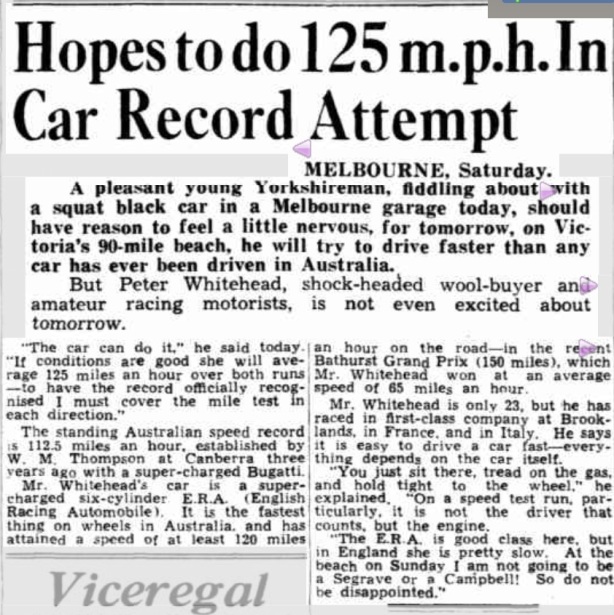
Etcetera : Whitehead…




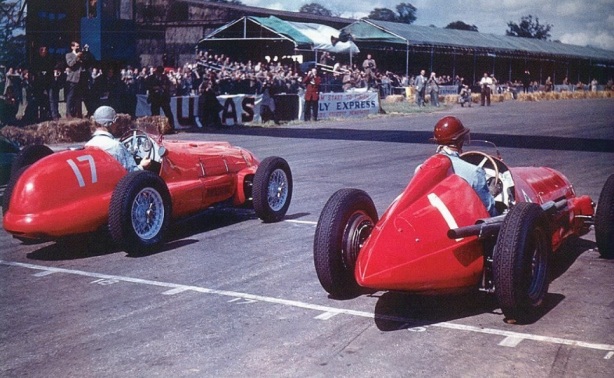

Bibliography…
John Medley’s 1938 Chapter in Graham Howard’s ‘History of The AGP’. Howard’s Motor Racing Australia article on ‘Closed Circuit-Maroubra Speedway’, Arthur Rizzo interview via Ray Bell TNF, Illawarra Shire website, Parramatta City website/Peter Arfanis, ‘Closed Circuit:Parramatta Park’ article by Graham Howard in Motor Racing Australia, Whitehead career summary historicracing.com, vintagespeedway.com, ERA Club, The Nostalgia Forum, Guy Bond Bevan, ‘The Mail’ Adelaide 3/9/38, ‘The Argus’ Melbourne 5/9/38, 14/6/38, 3/10/38, ‘Sunday Times’ Perth 4/9/38, ‘The Canberra Times’ 11/11/38, Sydney Morning Herald 4/11/38
Research Assistance…
Stephen Dalton, enthusiast/historian for the advice, photos, sourcing some of the references, and ‘post posting’ errors detection!
Photo Credits…
Ted Hood, John Blanden Collection, Bob King Collection, Graham Howard ‘History of The Australian GP’, State Library of NSW, Leon Sims/MG Car Club, Stephen Dalton, Bob Shepherd, DMJ Illustration, Dave Sullivan Album, The GP Library, Autosport, Wheels magazine, Frank Wetton, John Medley ‘Bathurst: The Cradle of Australian Motor Racing’
Martin Stubbs of the Dacre Stubbs Collection for securing the use of the 90 Mile Beach and Aspendale Speedway images of the late EH Price from the Collection of John Hazelden. Thanks Martin and John for the use of these rare images.
Finito…
Has that first image of the ERA been printed back-to-front? Other images on this page would suggest that the exhaust ran down the driver’s left.
Cheers,
Rob
Rob,
your detective work is first class, just had a quick look, it’s as you say! That image I lifted out of the AGP book so I suspect it was printed ‘arse about’ in 1938! It’s not said what corner the shot was taken on, I’ll send it to John Medley who is the Bathurst expert to see if he can say where it is ‘reversed’!
Mark
Wow. A very complete summary of E.R.A. and their particular cars. Thank you for sharing this.
Thanks ‘Torque’,
A while since I wrote that one- it was a fun one to research Peter Whitehead and his time in Australia.
Mark
Mark,
Re the image above captioned “The Crago/Sherwood stripped MG T Type lead at the half way mark. Here he is at the top of Mountain Straight…..”, I see that the caption for the same image in “The Official 50-race history of the Australian Grand Prix” suggests that it is “Anderson in Barrett’s Cowley special”. I’d have to say that the grille doesn’t look very MG-like and another image in “50-race history” indicates that Crago used a white helmet in the race.
Cheers,
Rob
Mark,
Please ignore my comment above re Crago’s white helmet as the fact that Crago & Sherwood both drove the car makes that somewhat irrelevant.
Rob
Cheers Rob,
Had not had a chance to look- it was a fun one to write, not knowing much about the topic. I may have discovered Trove on that one I think!
I had a bit of a fossick over the break for Sellicks material but have not struck ‘gold’ yet!
M
[…] https://primotipo.com/2015/04/16/peter-whitehead-in-australia-era-r10b-1938/ […]
[…] The wealthy wool merchant/racer was to compete in his 1938 Australian Grand Prix winning ERA R10B. Officialdom intervened in the form of the New South Wales Chief Commissioner of Police who decided to ban the race on Friday, the day before the meeting, due to concerns about competitor and spectator safety. Click here for my article on the 1938 AGP including details and pictures of the ’38 abortive, aborted Parramatta Grand Prix. https://primotipo.com/2015/04/16/peter-whitehead-in-australia-era-r10b-1938/ […]
[…] The wealthy wool merchant/racer was to compete in his 1938 Australian Grand Prix winning ERA R10B. Officialdom intervened in the form of the New South Wales Chief Commissioner of Police who decided to ban the race on Friday, the day before the meeting, due to concerns about competitor and spectator safety. Click here for my article on the 1938 AGP including details and pictures of the ’38 abortive, aborted Parramatta Grand Prix. https://primotipo.com/2015/04/16/peter-whitehead-in-australia-era-r10b-1938/ […]
[…] https://primotipo.com/2015/04/16/peter-whitehead-in-australia-era-r10b-1938/ […]
[…] Peter Whitehead in ERA R10B during his successful 1938 Australian Grand Prix weekend. Click here for a feature on Whitehead and the ’38 AGP; Peter Whitehead in Australia: ERA R10B: 1938… | primotipo… […]
[…] His success in ‘chasing sheep’ is unknown but his motorsport endeavours were well rewarded with victories in the Australian Grand Prix at Bathurst, and the Australian Hillclimb Championship at Rob Roy in Victoria’s Christmas Hills. See here; https://primotipo.com/2016/02/24/peter-whiteheads-1938-oz-tour/ and here; https://primotipo.com/2015/04/16/peter-whitehead-in-australia-era-r10b-1938/ […]
Mark,
There is a comment above relating to the 1938 AGP which reads “Other entries included Tim Joshuas’ Meadows engined Frazer Nash”.
In John Medley’s Preface in “Cradle of Australian Motor Racing” he expresses some regret that he wrote in “The 50 Race History of The Australian Grand Prix” that Tim Joshuas’ Frazer Nash had a Meadows engine, when in fact it had a Gough engine.
Happy to give the actual quote if you don’t have access to “The Cradle”.
Cheers,
Rob B.
Thanks Rob,
All good, changes made.
Some of those early articles are a bit rough around the gills, gave it a quick spruce-up while I was at it!
Bob King and I were discussing this car a week or so ago, the bloke restoring it up on the Murray is making good progress and has a Gough engine ex-UK. An important car which will be there for the AGP Centenary Celebrations in 2027.
M